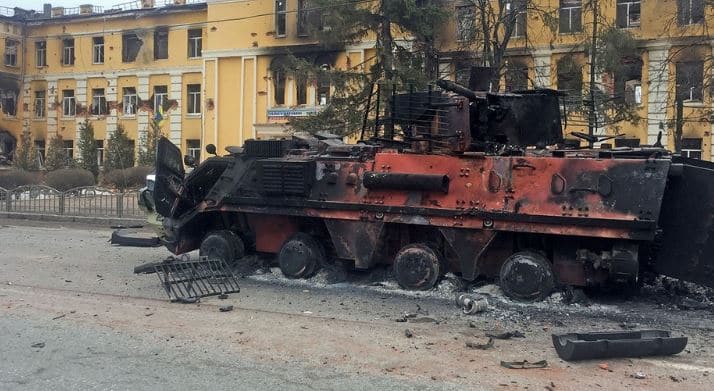The Biden administration has so far refrained from sending longer range missile to Ukraine. It fears a severe Russian reaction should it change that policy. Some warmongers dislike such sensible restrain.
In today’s New York Times some former British diplomat, now working for a pro-war think tank, is arguing for the delivery of longer range weapons to Ukraine.
“What are Putin’s red lines?”
This question, asked with growing urgency as Russia loses its war in Ukraine but does not relent in its aggressions, is intended to offer analytical clarity and to guide policy. In reality, it is the wrong question, because “red line” is a bad metaphor. Red lines are red herrings. There are better ways to think about strategy.
Red lines, where a consequence is threatened when an opponent does a specified escalating move, do not really exists, says the author. Red lines are movable, responding to a red line violation is a cost to the one who drew the line and red lines invite deceptions – says the author.
After spending several hundred words arguing that red lines are a useless concept the author argues that the ‘west’ should draw a big one:
Concerns about Russia’s “red lines” are driven above all by the fear that Russia might resort to nuclear escalation. The West should avert this by deterring Russia rather than by restraining itself — or pressuring Ukraine to do so — for fear of “provoking” Russia. It can do so by communicating the certainty of severe consequences should Russia use nuclear weapons.
For the record: Russia has never threatened to use nuclear weapons in Ukraine. It is a false assertion by the Biden administration that Russia did so.
Communicating that the ‘west’, i.e. the U.S, will do severe consequence X if Russia does Y is drawing as red a line as I have ever seen.
So what is the purpose of that red line:
Russia has no red lines: It only has, at each moment, a range of options and perceptions of their relative risks and benefits. It only has, at each moment, a range of options and perceptions of their relative risks and benefits. The West should continually aim, through its diplomacy, to shape these perceptions so that Russia chooses the options that the West prefers.
America has done this before. During the Cuban Missile Crisis, the most dangerous nuclear confrontation so far, the Soviet Union’s position shifted in a matter of days, ultimately accepting an outcome that favored the West.
The former British diplomat obviously lacks a decent education in history. The Soviet missiles in Cuba were stationed there because the US had stationed nuclear capable Juniper mid range missiles in Turkey and Greece. Those missiles threatened Moscow. They had crossed the Soviet red line. The missiles in Cuba were a counter threat to what the US had done. When the Kennedy administration recognized that it negotiated the removal of its missiles in Turkey and Greece in exchange for the removal of the Soviet missiles in Cuba.
It were the Soviets who had won that round of the Cold War, not the US
As he does not know the history of the Cuba crisis the author is drawing false conclusions from it:
While Russia is more invested in subordinating Ukraine than it was in deploying missiles to Cuba, the logic is the same. In 1962, America persuaded the Soviet leader, Nikita Khrushchev, that removing nuclear weapons from Cuba was, however unpalatable, a better choice than deploying them. Similarly, the West should now aim to persuade Mr. Putin that withdrawing his forces from Ukraine is less perilous than fighting.
To convince Russia to retreat, says the author, the ‘west’ should not restrain itself in weapon deliveries to Ukraine. It should increase sanctions on Russia to increase its costs. It should communicate that a retreat from Ukraine would not mean regime change in Moscow. (Even when that in fact is the obvious US endgame.)
Pursued firmly and resolutely, these diplomatic “shaping operations” in support of Ukraine’s military campaign can ensure that Russia’s least-bad option aligns with what the vastly more powerful West wants. Such a strategy is the opposite of accepting red lines.
…
Mr. Putin [..] should not be allowed to define the limits of Western policy now. Strategy needs rigorous thought, not lazy metaphors.
A lazy metaphor is like arguing against red lines while drawing a new one. A lazy metaphor is like faking history to draw the intended but wrong conclusion from it. The op-ed is not rigorous thought but muddled gibberish.
As soon as it becomes obvious to everyone that the Ukraine is losing the war, the Biden administration is likely to deliver more long range weapons to Ukraine with the advice to use them within Russia. Russia will respond to that. But most likely not in Ukraine, but in a place and at a time where it hurts the US more than anything that can be done to it in Ukraine.
Reprinted with permission from Moon of Alabama.


